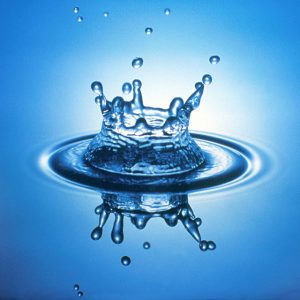
Water is one of our most precious resources and a vital part of our everyday lives. Currently, California is experiencing a drought. It is essential we conserve as much water as possible to ensure there is enough water for us now and in the future. Remember that conserving water doesn’t have to incur financial expense. There are many ways we can help save water simply by changing some routines inside and outside of our homes.
Here are some helpful tips to help conserve water inside the home:
• Take a (short) shower instead of a bath. A bathtub can use up to 70 gallons of water.
• When washing your hands, turn the water off while you lather.
• Turn off the water while washing your hair and save up to 150 gallons each month.
• Plug the sink instead of running the water to rinse your razor and save up to 300 gallons a month.
• Turn water off when brushing teeth or shaving and save approximately 10 gallons per day.
• When running a bath, plug the bathtub before turning on the water. Adjust the temperature as the tub fills.
• Fill the bathtub halfway or less and save 12 gallons.
• Install low-flow showerheads and save 2.5 gallons.
• Install aerators on bathroom faucets and save 1.2 gallons per person per day.
• Install a high-efficiency toilet and save 19 gallons per person per day.
• Test your toilet for leaks at least once a year.
• Put food coloring in your toilet tank. If it seeps into the bowl without flushing, there’s a leak. Fix it and start saving gallons.
• Run the dishwasher only when full to save water and energy.
• When washing dishes by hand, don’t let the water run. Fill one basin with wash water and the other with rinse water.
• Soak pots and pans instead of letting the water run while you scrape them clean.
• Use the garbage disposal sparingly. Instead, compost vegetable food waste and save gallons.
• Wash your fruits and vegetables in a pan of water instead of running water from the tap.
• Don’t use running water to thaw food. Defrost food in the refrigerator.
• Keep a pitcher of drinking water in the refrigerator instead of running the tap.
• Cook food in as little water as possible. This also helps the food retain more nutrients.
• Collect the water you use while rinsing fruit and vegetables. Use it to water house plants.
• Fix leaky faucets. A little drip may not seem like much, but a faucet that drips just five times a minute may be wasting more than 200 gallons of water a year.
Think we use more water indoors than out? Nope. Generally, 50% (or more) of water usage is for lawns and landscaping. Limiting outdoor water use can make the biggest impact on water conservation.
Here are a few more ideas to help conserve water outdoors:
• Water early in the morning or later in the evening when temperatures are cooler. This helps reduce evaporation and saves 25 gallons each time you water.
• Check your sprinkler system frequently and adjust sprinklers so only your lawn is watered and not the house, sidewalk or street. Doing this saves 12-15 gallons each time you water.
• A sprinkler system can waste water if sprinkler heads are broken, automatic timers are not adjusted for rain or hidden leaks are not detected.
• Choose a water-efficient irrigation system (such as drip irrigation) for your trees, shrubs, and flowers. Using this type of system saves 15 gallons each time you water.
• Water deeply but less frequently to create healthier and stronger landscapes.
• Put a layer of mulch around trees, shrubs and plants to reduce evaporation and keep the soil cool. Organic mulch also improves the soil and prevents weeds. Mulching can save 20-30 gallons each time you water (per 1,000 sq. ft.).
• Plant drought-resistant trees and plants and save 30- 60 gallons each time you water (per 1,000 sq. ft.).
• By using native plants (plants that are used to our climate), you may be able to reduce your outdoor water use significantly.
• Limit the amount of area devoted to your lawn. Lawns need great quantities of water, particularly in the summer.
• Wait until fall or winter to install a new garden. New plantings require more water than established growth.
• Keep shade plants in the shade. This will help prevent them from drying out.
• Place water-loving plants at the bottom of slopes where they will benefit from water runoff.
• A good way to check if your lawn needs watering is to just step on the grass. If it springs right back up, you don’t need to turn on the sprinklers.
For more helpful tips on water conservation and education, visit Water Wise in Santa Barbara County and Save Our Water. The Goleta Water District manages our local water. Visit their site at http://www.goletawater.com/.


